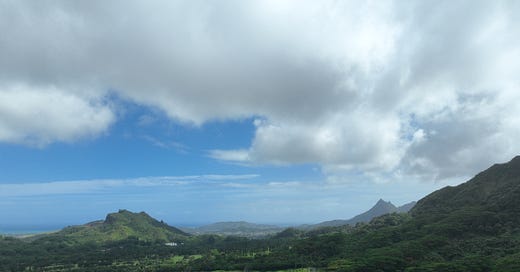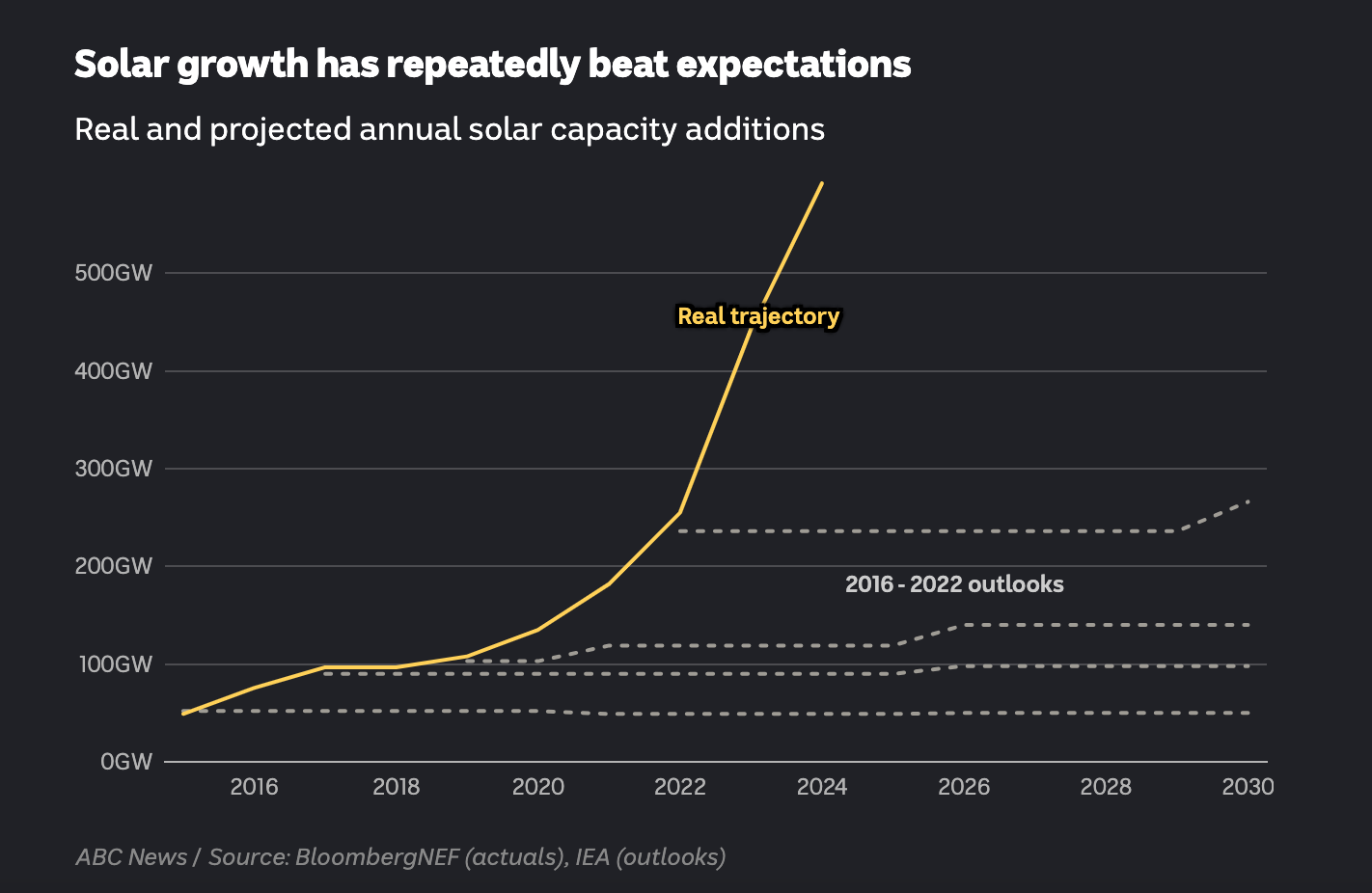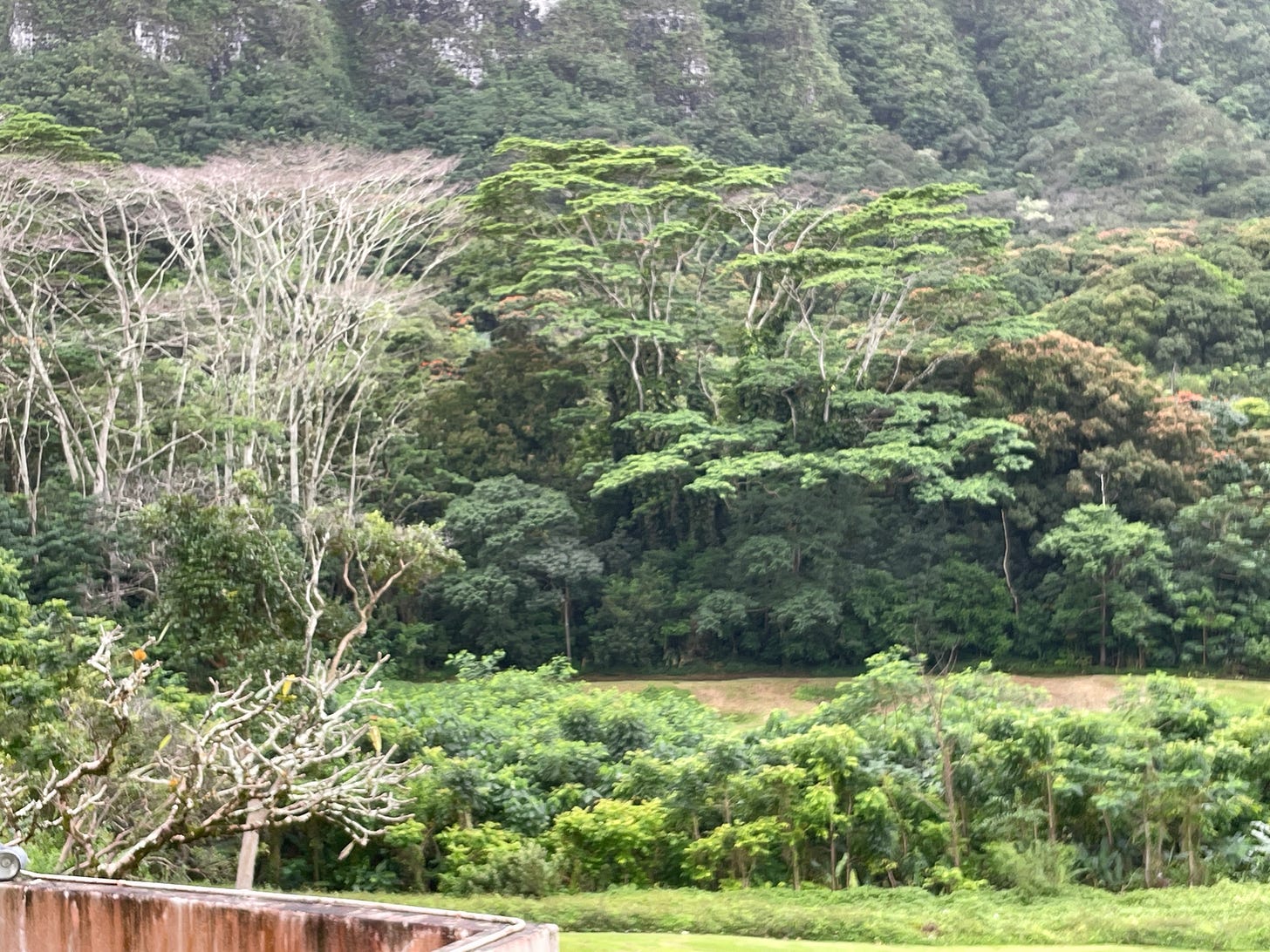Refugia Newsletter #84
California fires, polluter pay laws, offshore ban, golden moles, and Hawaii refugia
Refugia News
It’s a new year, and I’m trying not to chew my nails too much about what is in store for us and for the earth. “Resolute” is my theme word. We have to encourage each other, amid all the disheartening news and ugly discourse, to stay focused, attend to hopeful developments, and keep doing the strategic work we can.
To that end: Hawaii! I mentioned last time that I’d be coming to you from somewhere special for this newsletter, and here I am in Honolulu. I’m here with spouse Ron and our doctoral students in the Refugia Church cohort from Western Theological Seminary. We’ve just begun our adventures here connecting with people doing amazing, faith-inspired refugia work. I’ll tell you more below.
First, some video of the wintry Michigan we left behind. You will not be surprised to learn that I got a trail cam for Christmas. So fun! On my first try, I captured footage showing that our little back yard is basically a wildlife corridor, with numerous deer, two fat raccoons, two fat possums, and a fox! (Apparently, a group of possums is called a “passel.” Perfect.)
One of many deer who pass through between 1 and 3 am.
Don’t blink, but that’s a fox!
This Week in Climate News
Before we get to the cool Hawaii stuff, we have to do some news. It’s been a while since my last newsletter, so I’ll quickly cover four stories for you today: fires, polluter pay laws, offshore drilling bans, and President Carter’s legacy.
First, you have no doubt heard all about the horrific fires in the Los Angeles/Pacific Palisades region. I’ve been following this news with special concern since my family lived in Sun Valley, California, from 2004-2006 while my husband was doing his doctoral work at Fuller Seminary in Pasadena. We know this region pretty well and have numerous friends there. Even apart from our personal connections, though, I wonder—as you do, too, I’m sure: how many more people will have to endure trauma, loss, and severe disruption from disasters like this?
Screen capture from latimes.com last night.
I wonder if the news coverage you’ve heard has mentioned anything about the role of climate change in making fires like this much worse. Here’s a good account from Yale Climate Connections on the role of climate change in this and other fires. In the case of the LA fires, climate change helped create a longer drought, hotter temps, and stronger/later Santa Ana winds that in turn set the perfect conditions for this devastating set of fires. We know that climate change, for a long time, has made California much more vulnerable:
A 2023 study found from 1971 to 2021, human-caused climate change contributed to a +172% increase in burned areas in California, with a +320% increase from 1996 to 2021. In the coming decades, a further increase in annual forest burned areas is expected, ranging from 3% to 52%.
This satellite shot gives a better sense of what it means for a whole neighborhood to burn. Source: New York Times.
Who will pay to repair and rebuild all the damage to property and infrastructure? This is becoming a more pressing question as disasters increase in strength and frequency. Last time I mentioned that insurance companies are dropping homeowner policies in at-risk areas, including some regions of California—a trend likely to continue. That leads to our second key story in the past few weeks: New York’s recently passed polluter pay law.
In late December, New York became the second state (after Vermont) to pass a law that basically says to the fossil fuel industry: you caused this, you pay. Here’s what Hilary Howard wrote in the New York Times:
Gov. Kathy Hochul of New York on [December 26] signed a law that requires companies that are big fossil fuel polluters to help pay to repair damage caused by extreme weather, which is becoming more common because of greenhouse gas emissions.
The legislation, called the Climate Change Superfund Act, mandates that the companies responsible for the bulk of carbon emissions buildup between 2000 and 2024 pay about $3 billion each year for 25 years.
According to Jonathan Allen of Reuters, this could amount to $75 billion in penalties, which would go a little way toward the estimated $500 billion the state of New York will need between now and 2050 to deal with damages and adaptations thanks to climate change. Meanwhile, Allen writes, “Major oil companies made more than $1 trillion in profits since January 2021.”
Polluter pay laws are only conceivable now because of the well-established evidence that the fossil fuel industry has known since the 1970s that burning fossil fuels causes dangerous warming, and that industry majors conspired to cover this up. The development of attribution science—which studies how much of a given disaster is attributable to climate warming—is also essential to the reasoning behind polluter pay laws.
Of course these laws will be fought tooth and nail by oil majors and others, but four more states are lined up to pass their own versions of polluter pay laws (California, Maryland, Massachusetts, and New Jersey). This is part of a global trend in which environmental law experts are seeking legal tools with which to hold polluters of all kinds accountable for the costs of their “externalities,” costs which have frequently been shunted onto taxpayers.
Case in point: here’s a grim piece from ProPublica explaining American oil companies’ “playbook,” which entails profiting from oil wells in the Permian Basin and then, through layers of shell companies and sell-offs, abandoned used-up wells and leaving states—hence taxpayers—with the bill for cleanup and capping.
Just for fun, here’s how this kind of legal discussion looks in one professional journal in the environmental law field. Sample quote from the article:
A growing “climate accountability” movement seeks to use policy and the courts to hold fossil fuel companies accountable for these monumental acts of deception. And after years of frustration, climate litigants have begun to achieve meaningful procedural progress.
OK, third story. President Biden, on his way out the presidential door, has permanently banned offshore oil and gas drilling along much of the East and West Coasts, the Eastern Gulf, and Alaska’s Northern Bering Sea, about 625 million acres of ocean. This one will be tough for the next president to undo. Here’s a quick summary from Andrew Freedman at Axios:
Unlike executive orders that Trump could overturn with the stroke of a pen, Biden’s actions rely on an open-ended provision in the 1953 Outer Continental Shelf Lands Act.
· This law governs energy leasing activities for submerged lands under U.S. control that are beyond three miles from shore.
· A provision in the act allows the president to permanently take parts of the Outer Continental Shelf off the table for leasing activities, without providing a means for another president to undo the action.
Note: This image does not include the Alaska areas. Image credit: usa.ocean.org.
I love the idea of some ambitious staffer dusting off a 1953 law and reading all the footnotes to find this provision and suggest this plan. While the executive order seems like a dramatic and sweeping act, many of these waters are not of urgent interest to the oil and gas industry anyway—although the eastern Gulf is a tempting target. The western Gulf remains drillable, and many regions are protected by state laws. Still, the executive order is a significant gesture, another effort to send a signal that the future belongs to clean energy.
Finally, a moment to honor President Carter, who died on December 29. I’ve seen many tributes to his efforts to move us toward clean energy way back in the 1970s. Carter’s early efforts were frustrated by his successor, Ronald Reagan. But in the past week, numerous climate writers honored Carter’s environmental vision and legacy in their tributes. Here are three pieces, one by Bill McKibben for the New Yorker, one by David Gelles for the New York Times, and one by Jonathan Alter for Inside Climate News.
Deeper Dive
We are going to hear a lot in the next few years in the US from clean energy skeptics and naysayers; nevertheless, a solar energy boom is afoot worldwide. Thanks to Australian news organization ABC for creating this graphics-festooned story about the skyrocketing number of solar farm installations. This piece analyzes solar energy installations by region and demonstrates beautifully what the subhead claims: “A planet-wide solar boom has been beating expectations at every turn. And it’s only just the beginning.”
I’ll tempt you to explore further with a taste of the terrific graphics.
A lame image capture of the groovy animations.
The kind of hockey-stick curve we like to see.
Refugia Sighting
I spent the day yesterday with our doctoral students and some good friends from A Rocha USA and Biologos learning from the amazing folks at First Presbyterian Church of Honolulu. I will tell you more of this story in the next newsletter, but for now I’ll quickly introduce you to an impressive refugium.
About twenty years ago, First Prez (their favored shorthand) wound up buying a 256-acre piece of land with a golf course on it (long story). They basically moved into part of the club house. Eventually, as they expected, the golf course operation was no longer viable, and they have since been very intentionally working with community partners to rewild half the course. They formed a nonprofit called Hakuhia, and they are slowly transitioning the land back to native plants, working with native Hawaiians, horticulturists, and other experts to create a place of healing and community.
See that building there? That’s the old club house, which is now an event center and First Presbyterian Church. Many thanks to doctoral student Louis Ford for this drone shot—you’ll see more of his work next time!
Along the entrance road to the church and event center and church
On the left, dead albizia trees. On the right, live ones. The alibizia is an invasive, one of the species the Hakuhia folk are slowly eliminating.
After spending the morning learning about First Prez’s work, we moved on to a faith-based lo’i (farm) where a visionary couple has been building another refugium. Dean and Michele Wilhelm are Christians with a special heart for helping young Hawaiians connect with their cultural roots and heal themselves by helping to heal the land. They grow kalo—which you might know as taro—a crop central to historical Hawaiian culture.
Kalo thrives in very wet environments. Here’s our group getting our feet good and muddy walking through the kalo field. Photo credit: Louis Ford.
There is so much more to tell you about what we learned today! But honestly, I need more time to process it all. Let me just say: I come away from today greatly encouraged by the way God is clearly working to build networks and create places of healing.
Media Corner
A book recommendation for you. I just read Katherine Rundell’s beautiful little book, The Golden Mole: And Other Vanishing Treasure (Faber, 2002). Rundell has written a series of delightful, witty little essays about a passel (had to use that word again) of fascinating creatures—all of which are endangered or threatened. The wombat, the narwal, the seahorse, the lemur, of course the golden mole, and many more—Rundell lures you toward marvel and delight with clever descriptions and nifty facts and surprising historical references. I suggest buying the paperback, which is richly produced and illustrated.
Rundell is a Renaissance scholar who also writes about nature and climate change—the third such person I know, including Genevieve Guenther and… me. I guess we need to start a support group or something.
All right, enough for today. I’ll share more about Hawaiian refugia with you next time. Till then, be well.














So happy to have found you and your work!